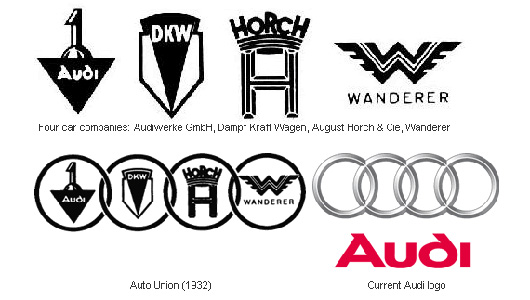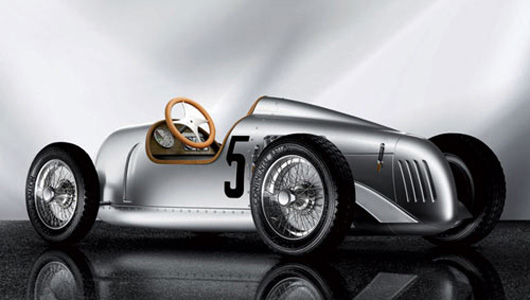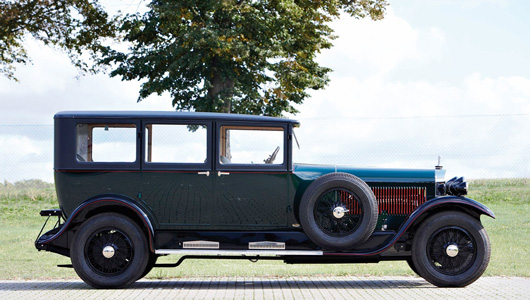Audi was officially launched with the name Audi AG in 1985 and has its roots from the famous car company called Auto Union AG.
Auto Union AG was founded in 1932 after the merger of four companies based in Saxony, including Audi (founded in 1909), Horch (founded in 1899), Wanderer (founded in 1885), and DKW (founded in 1904).
The four rings logo symbolizes the combination of the four companies: Audi, DKW, Horch, and Wanderer, which appeared in 1932 under the name Auto Union AG. Later, Auto Union AG and NSU merged in 1969, both making significant contributions to automotive development. Audi AG was established from NSU and Auto Union AG in 1985.
 Auto Union AG was founded in 1932 after the merger of four companies
Auto Union AG was founded in 1932 after the merger of four companies
Audi AG has a long and changing history. Before the end of the 19th century, August Horch founded a company known as Horch & Cie. Motorwagen Werke in Cologne. In 1902, he moved the company to Zwickau in Saxony, and in 1904, it was reestablished as a public company. In 1909, after a dispute with the board of directors and supervisors, August Horch left the company and a few weeks later founded a second manufacturing plant also in Zwickau. When he could not use his own name because it was a registered trademark, he chose a Latin name as a replacement: “Horch” (meaning “listen”) became “Audi”. The name Audi was proposed by a student in Latin, the son of a business partner of Horch.
The production of cars began on a small scale, following Horch’s basic principle of building “powerful, high-quality cars”. Within a few years, Audi had truly developed and become the most famous brand in the German automotive industry. It succeeded in the initial stage of competition. Victories in the Austrian Alpine Rallies between 1911 and 1914 made the name Audi familiar worldwide. The Audi Type C 14/35 PS was particularly successful and earned the title of “Alpine Victor”.
 Audi Type C won the “Alpine Victor” award
Audi Type C won the “Alpine Victor” award
The Audi museum will display no fewer than 13 of the oldest surviving Audi models anywhere in the world. Currently, the interest is not only in these historically significant models but also in some of the tales from the early days of the brand. From the main activities of the company, originating from World War II, the exhibition organizers have expressed the story in images like a comic book.
Each page refers to legends, special events, and milestones in Audi’s history. The choice of the name, August Horch’s departure, the first eight-cylinder model, pioneering the use of reverse steering in Germany, the competition of the first Audi-branded radiator, the acquisition of DKW, and the continuous innovation of Auto Union… the chronicle continues until the outbreak of World War II, when the second-largest car manufacturer in Germany stopped producing civilian cars in general. As Stefan Felber from the Audi museum explained: “Audi’s history is too fascinating for a traditional exhibition. We want the viewers, as well as children, to easily grasp it when they browse for the first time.”
The Front Roadster – an elegant car of Audi throughout history, only had two prototypes built in 1935, and both have disappeared. The tradition of Audi also provides a platform for the experts of Zinke company in Zwönitz, who have built a true replica with pictures of the car as a guide. Now this roadster has appeared in the world at the Audi museum. Other highlights of the exhibition will be the Audi Type A from 1911, which first appeared at the company’s headquarters in Ingolstadt. It was the 78th car built by Audi in Zwickau and has the longest surviving history. The unique Type A, with a 26 horsepower engine, is capable of achieving a speed of 75 km/h.
Another ancient artifact is an Audi Type E built in 1913 with a 55 horsepower engine and a 5.7-liter capacity – the largest engine built by Audi during its time in Zwickau. This model was produced until 1924.
Audi set a technical milestone in 1923 with the Audi Type M, one of their most impressive and luxurious cars in Germany. The light alloy engine block, handcrafted in a vertical format, and the transmission with bevel gears, along with the new air intake, were equipped. This was the first Audi model with brakes on all four wheels. The car’s relatively high price of 22,300 Reichsmark (old German currency) made it unsuitable for many people’s budgets. To this day, only 3 of the 288 sold cars still exist, and there is also an additional chassis. The displayed car is a model chosen to illustrate typical technical features and the sophistication of the car. Following the Audi Type M, the first eight-cylinder model, the Audi Type R “Imperator” (emperor), with 100 horsepower. The car was built in 1929 and is the only one left in the world.
In 1931, Audi began building the Type P, the world’s first small car in the brand’s history. For many years, it was believed to have ceased to exist until 2003 when one was found in Ludwigsburg. Its data shows that the last owner was the mayor of a Swabian town in Germany and had been forgotten since 1955.
Thế Đạt (Source: PL&XH/Compiled)











































